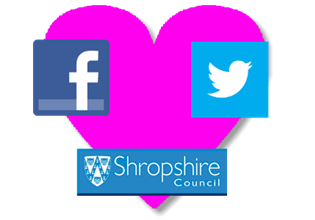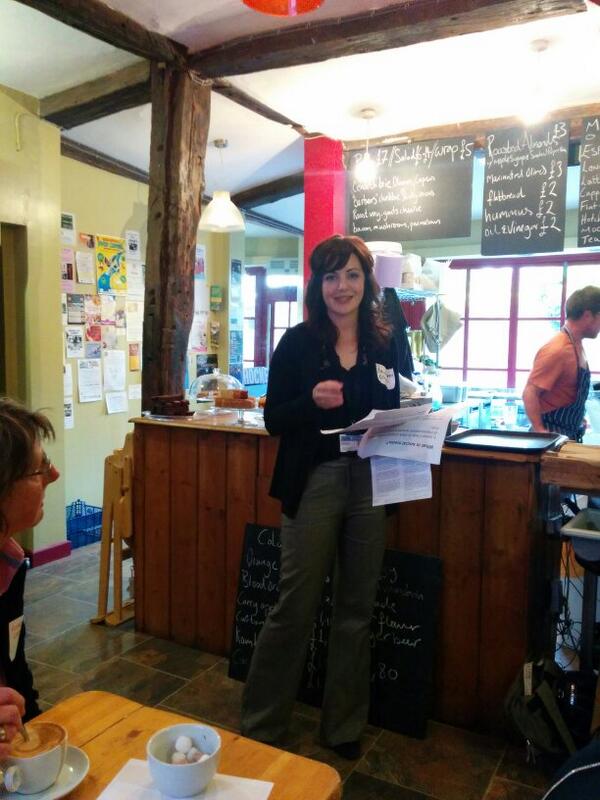
Intro
 Last night (1st May 2014), I gave a talk at an event called #rocketcamp in Hereford that was organsied by the lovely Ben Proctor ( head of web & comms at Herefordshire Council), and aimed at social media, PR & comms folk working for social good.
Last night (1st May 2014), I gave a talk at an event called #rocketcamp in Hereford that was organsied by the lovely Ben Proctor ( head of web & comms at Herefordshire Council), and aimed at social media, PR & comms folk working for social good.
I was given five minutes to talk about the pros and cons of having 90 social media accounts across Shropshire Council. However, this was a slight issue, as I can talk for hours on this subject, and, as expected, excitement got the better of me and I ran out of time. I ended up wrapping up quickly, and agreeing to write up my list of pros and cons to send on to the attendees later.
It was the promise to provide what I had missed out from my talk that has led me to write this blog post about the social media channels we use at Shropshire Council... so, here it goes!
What does Shropshire Council do with social media?
Well, to start off, let's see some quick stats:
- We have 46 active Facebook accounts and 44 Twitter accounts (that we know about - oh yes, those pesky people who don't follow the rules are still out there!)
- We have recently closed or unpublished 22 accounts that were either underused or not used at all by services.
Of course, these accounts didn't come out of nowhere.
Social media has come a long long way since it was first introduced in the council. In the early days there were a few accounts set up to test the water (including our own @ProjectWIP Twitter account), some of which became the main corporate accounts, held in-house by our Communications team. As the popularity of social media grew, so did the amount of accounts Shropshire Council had, evolving into a mix of core corporate channels and child accounts that compliment each other and the work that the council does in Shropshire.
As part of merging of the different branches of the web (the team who did the design & development of websites, and my team, who managed the content), the Digital Services team was born, and was tasked with looking after all aspects of Shropshire Council's digital presence, including social media. This means that we now have administrative access to all of those accounts and a central database of passwords - although collecting all this information was not an easy task and keeping on top of it still isn't, as you can imagine!
You may have seen my blog post 'It never rains but it pours' which talks about our experiences of using social media during the adverse weather at the start of the year, and how it has changed the way we do things here at Shropshire. It led on to a more personalised approach to using our main corporate channels, whereby we present ourselves as individuals working in the council, rather than a featureless council entity. By introducing ourselves by name, and chatting to the people who contact us, we have found our followers have increased, and the amount of interactions we get has gone up dramatically.
We've put together our own Storify where I've documented the campaigns we have run over the past 8 - 12 weeks, and we also have loads of cool ideas and plans in place, so keep your eyes peeled for further blog posts.
The pros and cons of us using social media
Pros
- Services are given more tools to promote what they are doing and engage with their customers directly.
- Allowing services to keep their own accounts seems to help us with the issue of people using personal accounts to talk about work.
- Self-promotion through accounts also helps drive direct traffic to our website, as well as sub-sites, blogs and partner websites. By doing this we raise awareness of the range of services offered online, and give our customers the tools, confidence and knowledge to self-serve where possible - reducing the amount of interactions we have, and saving the council money.
- Any interactions that take place are in real time, which has meant that some customers have their queries answered within seconds, or are pointed in the right direction to self-serve. This helps reduce the pressure on individual council services who would have to handle these interactions in another way and, again, saves money for the council as a whole.
- During the UK storms in February, our team kept our Twitter channel available to the public with up-to-the-minute (up-to-the-second, if we're honest) information, and helped coordinate efforts with partner organisations. We couldn't have done this as effectively with just a website and standard communication channels (telephone, email etc.).
- The positive feedback from our use of social media during the storm encouraged some senior managers to become involved with the Twitter campaigns once they saw the affect it could have.
Cons
- They are difficult to stay on top of – despite handing over responsibility to the service area, we need to protect the reputation of the council and check that they are using them frequently enough (and responsibly!)
- A lot of our team’s time is spent either organising the setting up, maintenance or administrative rights for accounts, or chatting to people about the correct use of social media. However, the good gained from improving our reputation, and the costs saved by offering a less bureaucratic communications channel, does heavily outweigh this initial outlay of time & effort
- Sadly, there is still misunderstanding, confusion and reluctance to get involved in social media from some within the organisation, and so, although we know its potential, it can often be hard to get that message across to others.
- Facebook – I think there is a huge divide between those on Twitter and those on Facebook. Feedback on Facebook seems to be unstructured and negative, whereas we get more clear and to-the-point enquiries via Twitter (probably because the 140 character limit forces people to choose their words more wisely).
- Hard to keep consistency in brand across all the accounts, so we have introduced SC avatars for each area to try to tackle this.
- Lack of a unified communication strategy - key messages and campaigns that could be disseminated across multiple accounts have often gone under the radar. To try to overcome this we have created a shared publishing calendar which means that opportunities are not missed to cross-promote activities that the council are involved in. We hope to roll this out to partner organisations shortly.
- No ‘bigger picture’ view as to when we publish what on each account, which potentially makes each tweet a danger to our reputation. If someone publishes something that happens to been in connection with something controversial e.g. we mention how nice a particular area is, unaware that a controversial planning application has just been approved in that exact same area, it can quickly turn from something innocent to a social brawl (not pretty!)
Although the number of cons is greater than the pros, a lot of them are actually "lessons learned", and the processes we now have in place have reduced or removed their impact on how we work.
Some interesting info - Paul Inman's "Amazing Service Delivery Through Social Media Evolution Theory"
While I was writing this post, I had a good chat with my wonderful friend Paul Inman from Warwickshire County Council, who shared his thoughts on the levels of social media engagement in a local government setting and has graciously allowed me to repeat them here - with the caveat that I include his extremely quirky title. The references are to Warwickshire's Twitter accounts, but, for me, it accurately reflects how our own use of @ShropCouncil has evolved (I think we are at Level 4 now!).
Level 1
One-way push communication. Posting messages out that are unprompted by customers. May be fully automated. Doesn't reply to responses from followers. May even contain a line in the profile that states this. EG @warksgritting
Level 2
Two-way communication, although still focused on initially pushing out messages. Replies to customers who message or respond to them, which may lead to discussions online. But still based on an initial posting made by themselves. EG @warksfis
Level 3
First stage of using social media for customer service. Main purpose of account is to deal with customer service issues, rather than communicating key messages. Responds when contacted directly. Tries to deliver a service and answer service enquires. Treated on a par with other customer service enquiry routes. EG @wccbusservices
Level 4
Seeks out issues that our customers may be having and contacts them to resolve their issue. Doesn't wait for customers to contact them. For example, if a customer is moaning generally about potholes, they are sought out, contacted and asked for more info/directed to reporting form. EG So far no WCC services, or indeed any public sector accounts that I've come across.
To sum up...
The social media landscape here in Shropshire is ever-changing, but my hopes for the future are that we :
- have as many well-used social media accounts as we need that are joined up and consistent in their approach
- roll out a social media management tool across the organisation to enable a high level overview of activity
- actively encourage services to take responsibility and plan campaigns to highlight the great work that they do
So keeping with the trend, any feedback is great whether on here, Facebook or Twitter (Project WIP & Shropshire Council) - we will be listening!